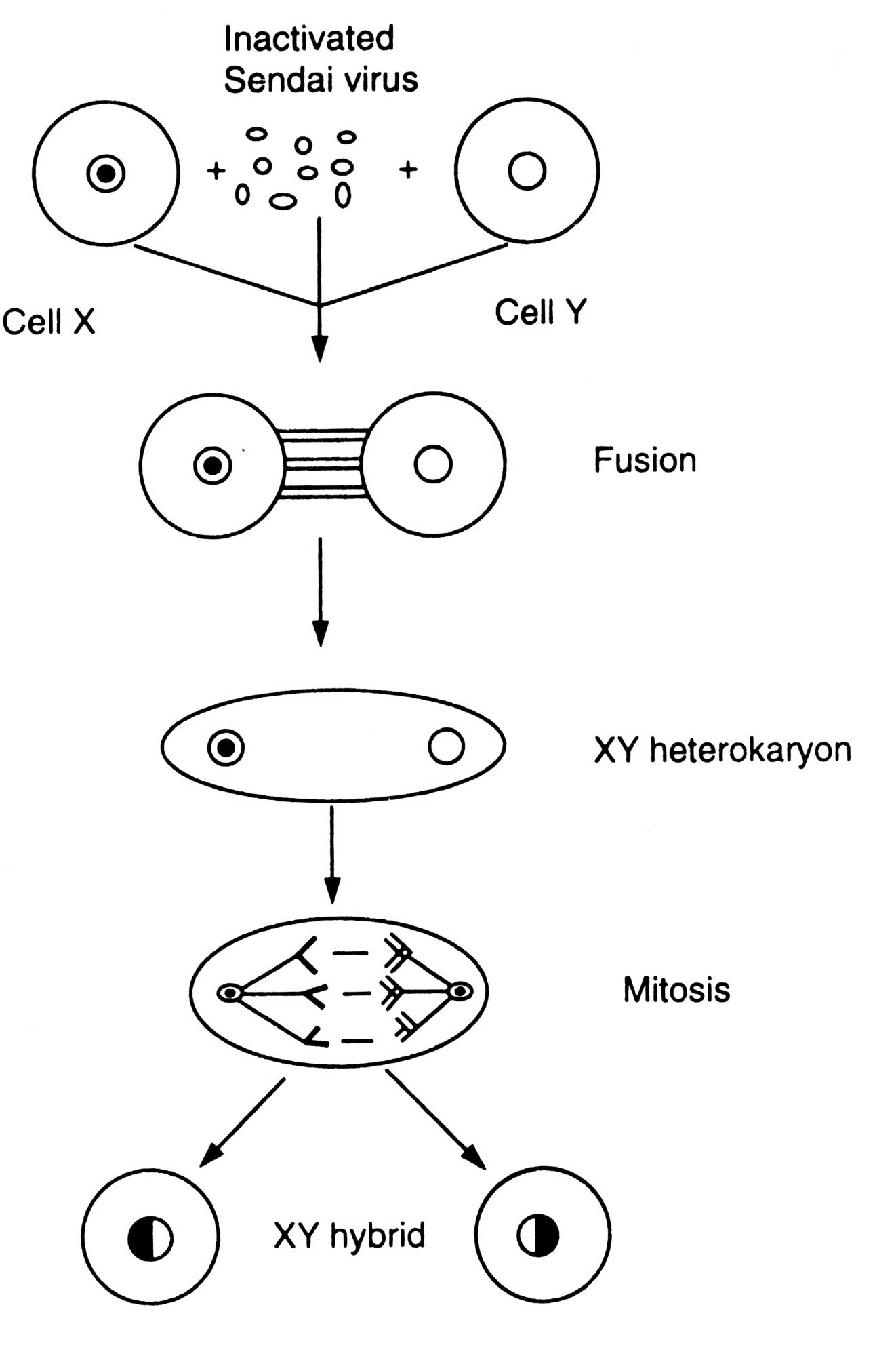Somatic Cell Fusion

Fig. 6.7. Production of somatic hybrids of two different cells by using Sendai virus (diagrammatic).
Moreover, within the body fusion of myoblasts and formation of multinucleate fibers may be exemplified. They can also be allowed to fuse in vitro and form heterokaryons. Macrophages fuse around the foreign body or bacterial cells in the tissues. Bone cells are also known to undergo somatic cell fusion. Cells growing in culture are induced by some of the viruses such as 'Sendai virus' to fuse and form hybrids. This virus induces two different cells first to form heterokaryon (Fig. 6.7). During mitosis chromosome of heterokaryons are brought towards two poles which later on fuse to form hybrids. Removal of surface carbohydrates is necessary before establishment of cell fusion. Some chemicals such as polyethylene glycol also induce somatic cell fusion. It is interesting to note that the cells of taxonomically different animals can fuse and form hybrids. This suggests that there is no compatibility between membranes, nuclei, organelles of two different groups of animal cells (Sidebottom and Ringertz, 1984).




